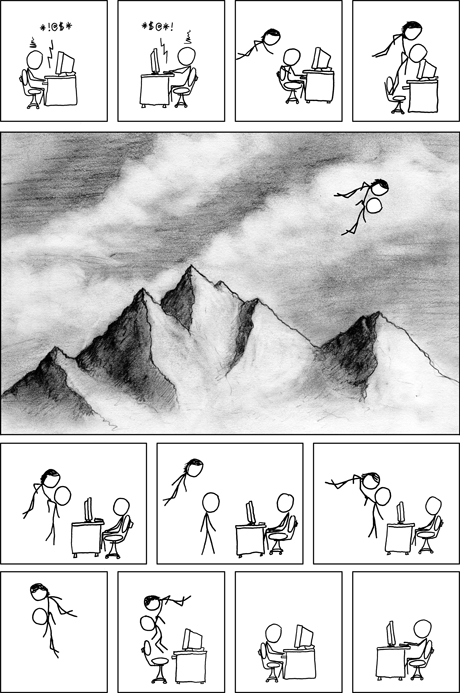A couple of months ago, I did a presentation on “re-humanising people through design” for a job interview. It’s an idea I got partially from the work of Bret Victor and a lot from the first issue of The Manual.
The core idea is that a lot of aspects of our society, and especially the way we share information, are based on abstraction. To abstract something is to make its representation less specific, so that it’s easier to work with, to understand, or to communicate.
We abstract all the time in our everyday lives. Recipes will often tell us to “cook the vegetables”, instead of “cook the carrots, onions and broccoli”; we’ll tell people to turn “left” at the roundabout, when really, there’s two exits that are left, just one is very “left”, and the other is only slightly “left” (ever notice how GPSes only ever say “take the second exit?”). We’ll refer to someone as “that guy over there”.
Our ability to abstract is part of what makes us able to reason as humans, but ironically, it enables us to dehumanise others. When we start abstracting people, we become so quick to forget about their humanity.

Internet Argument
“It’s easier to be a jerk to words than people” xkcd #438
And that’s the problem: so often on the Internet, we forget that we’re talking to people, and not just to an idea, or a collection of words, or a username.
Everything changes when we realise that we’re interacting with people. Take the average comment you read on YouTube and compare it to the average comment you read on Facebook.
Design can help people to remember that they’re dealing with human beings: not just words, not just ideas.
Design can also stop people, real people, with brothers, mothers, children, husbands and wives, from simply becoming statistics.
“If I say to you there were 99 murders in San-Francisco in 2008, you’d think it was deplorable for the three seconds before you completely forgot about it, but if I show you the actual map it makes you think this person died here and that one over there; you see a pattern; you see that most of them are on the east side of town, it becomes particular and specific, it becomes places you could have been - it could have been you, you could go to them, you could bring flowers…”
Every one of those 99 people were human beings, with stories, with family, with memories. As designers, we have the power to ensure we’re emphasising individuals’ humanity, not abstracting it away from them.